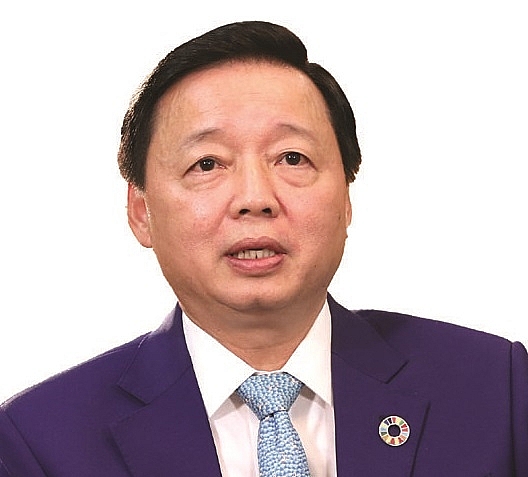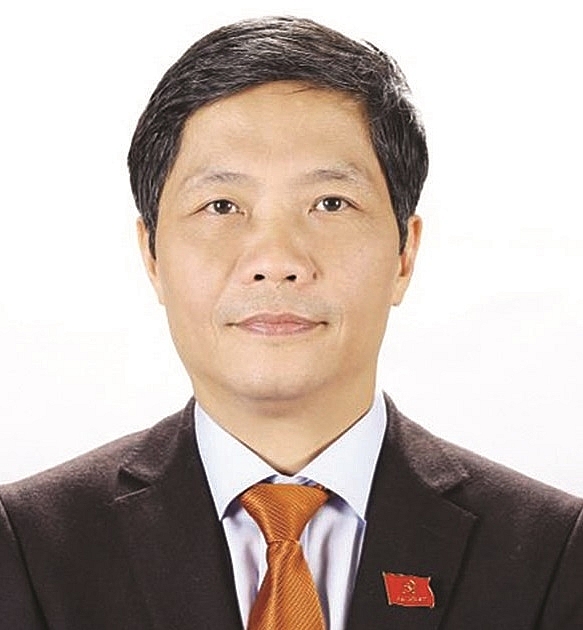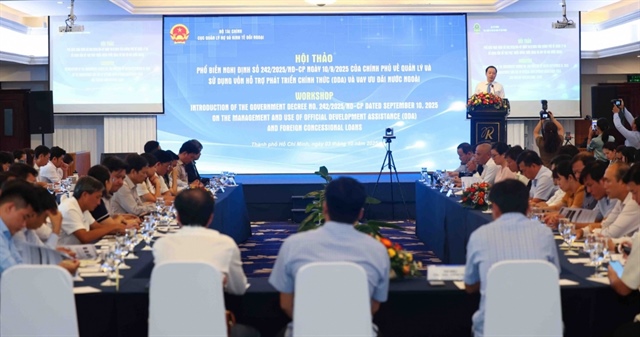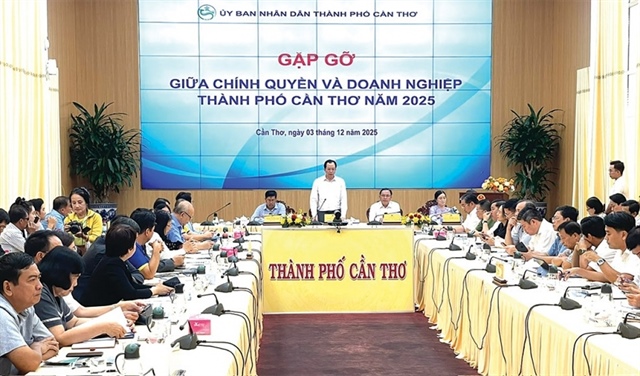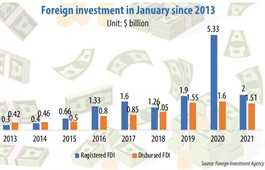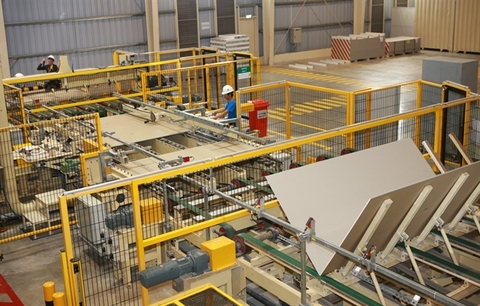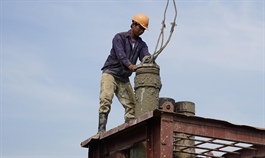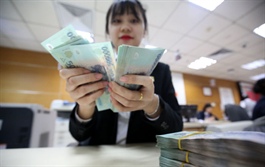Determination and action to propel socioeconomic march
Determination and action to propel socioeconomic march
The 13th National Party Congress has set a new direction for the country’s development for the next 10 years. Tran Du Lich, member of the Prime Minister’s Economic Advisory Group, talked with VIR’s An Nguyen about the priorities Vietnam needs to double down on to forge ahead.
One of the most important issues of discussion on the agenda of the 13th National Party Congress was the Socioeconomic Development Strategy 2021-2030, with the goal of making the country a developing, upper-middle-income nation with modern industry. What does the country need to keep an eye out for while pursuing this goal?

Tran Du Lich, member of the Prime Minister’s Economic Advisory Group
|
After nearly 35 years of doi moi, Vietnam has reaped a series of significant achievements, shortening the development gaps with other nations in the region and the world over.
In 2010, Vietnam ranked up from the low-income bracket and became one of the world’s middle-income nations. In 2020, the country’s per capita GDP hit about $3,000, which may drive the country into a “middle-income trap” if no solutions are taken.
Thus, it will be very important for Vietnam over the next 10-15 years to quickly shorten the development gap with the world and strengthen its industrialisation and international stature.
To this end, Vietnam would need very strong political determination and action with burning national aspiration and great consensus from the entire political system. This will create great confidence among the public and the business community.
What are the most important issues for national development in this period?
It is necessary to set a high economic growth target to motivate progress. Experiences from successfully-industrialised nations in the latter half of the 20th century showed that political determination was key for industrialisation.
Normally, if GDP climbs by an average annual rate of 7.2 per cent, the absolute GDP will double in 10 years. In 2020, Vietnam’s GDP was nearly $273.9 billion. If such a growth rate is achieved, the absolute GDP will be about $547.8 billion by 2030 – without calculating changes in exchange rate and purchasing power parity. Thus, in the 2021-2030 period, we need to set a target average annual growth of 7.5 per cent. The rate should be 7-7.5 per cent during 2021-2025, and 7.5-8 per cent during 2026-2030.
In 2021-2022, efforts should be made to focus on recovering growth and facilitating businesses to engage in the restructuring of the domestic market. This may lead to a growth rate of below 7 per cent in this period. However, from 2023 onward, the rate may be higher if backed by stronger institutional reforms and opportunities from free trade agreements are seized.
What advantages should be promoted so that the nation can reach an average annual growth rate of 7-7.5 per cent during 2021-2025, and 7.5-8 per cent during 2026-2030?
Given the great potential of the country and achievements of Industry 4.0, and if four key economic pillars are fully tapped into, the target will be feasible.
Firstly, it is necessary to effectively exploit the potential of the country’s tropical agriculture, which can provide good materials for processing and exports via the renewal of production methods and the application of high technology.
Secondly, it is necessary to exploit the advantages of the maritime economy, including coastal economic zones and port-logistics services. It will create spillover effects for other economic sectors and serve national defence and security. Thirdly, Vietnam needs to develop it tourism industry, becoming a global tourism spot.
Finally, the country should develop the urban economy. To materialise these four pillars, high-tech application and innovation are among the key solutions.
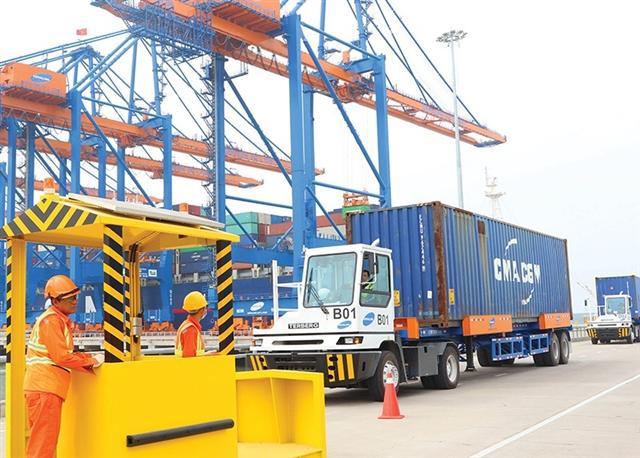
Amid its global integration, Vietnam places much focus on the digital transformation and sustainable progress
|
Ten years ago, on the threshold of the 11th National Party Congress, you also highlighted the need to intensify institutional reforms. Why are you still interested in this issue?
I think that further improvement and the synchronisation of the market economy’s institutions are still driving economic reforms. In the time to come, I think, priority should be placed on solving the shortcomings in the relations between the state and the market, not via theory but through specific laws regarding state management in each sector. We need to pose and answer questions about the purpose of management, and whether it is the task of the state or the market. The state cannot always do what the market can and vice versa.
Currently the state is strongly interfering in the market. Many laws enacted by the previous tenure of the National Assembly must be revised during the new tenure as they are overlapping with one another, making implementation impossible.
What institutional improvements do you think are the most crucial?
Institutional reforms need to run along five lines for the country to reach its ambitions.
Firstly, the state’s role and functions must be clarified. It cannot perform the tasks of the market or civil institutions and so its powers need to be clearly delineated, giving way to actors and mechanisms where they are better suited to act. This is a foundation for the construction of public and administrative apparatuses.
Secondly, the mindset of “local economic structure” must be erased by separating economic activities from public and administrative activities while establishing economic regions under a cohesive national development programme instead of the current rampant race in providing incentive policies.
Thirdly, it is necessary to remove the mindset of introducing national public work into local public work. This is a foundation to build a decentralised model of local governance for each state management area.
Fourthly, the national budget must be separated from local budgets, breaking with the current mixed budget mechanism, where these budgets are all referred to as the state budget. This will be a firm foundation to reform the national financial picture. The “ask-give” budgetary mechanism must be removed.
Fifthly, it is necessary to promote the role of non-profit institutions. Public services, especially those in the sectors of healthcare, education, and scientific-technological research, are partly and indirectly funded by the state via non-profit institutions.
COVID-19 remains a persistent complication and the word “uncertainty” is often used at discussions on economic recovery opportunities. What is your take on the Vietnamese economy’s outlook for 2021?
I expect that this year will mark the beginning of the post pandemic period, with the “new normal” becoming simply the “normal” in all economic activities. Vietnam’s economy can grow by over 6 or even 6.5-7 per cent.
The socioeconomic development attainments reaped by Vietnam in 2020 demonstrated very high political determination, especially of the government in the relations between the state and the market. This has not completely come from the adjustment of the market.
Thus, the goals for economic growth and economic restructuring in the first year of the 2021-2025 period must also signal strong political determination so that all impediments can be overcome to enhance all development resources.
What solutions do you think are necessary to materialise these expectations?
I think that situational solutions must be continued to help enterprises stay afloat and recover.
Regarding the fiscal policy, it is necessary to formulate a package to support unemployed people and this must be considered a key solution in the country’s social security policy.
As for the monetary policy, priority should be placed on providing preferential credit and lending rates for small- and medium-sized enterprises. The risks of mounting bad debts need to be assessed so that sturdy actions can be taken in good time. Credit must be expanded to stimulate the market’s purchasing power.
In terms of investment, besides removing bottlenecks for public investment, it is necessary to erase obstructions related to land, planning, construction, and appraisal of environmental impacts facing private enterprises in implementing projects.
There must also be a proactive policy on targeted inflation, exchange rate, interest rate, state budget overspending, and public debt.
There should also be a medium-term programme post-pandemic which will facilitate economic recovery in close connection with economic restructuring, especially boosting enterprises to engage in market restructuring. At the same time, opportunities must be seized from the implementation of the Comprehensive and Progressive Agreement for Trans-Pacific Partnership, the EU-Vietnam Free Trade Agreement, and the Regional Comprehensive Economic Partnership.
Thus the biggest challenge for Vietnam now and over the next five years is to have sound macroeconomic policies to align the economy with the changes in the regional and global economic situations. Vietnam needs to consider its economic digitalisation programme as a pivot in their efforts to transform the growth model in a more sustainable manner in the 2021-2025 period.
|
Tran Hong Ha - Minister of Natural Resources and Environment
After 35 years of economic reform, Vietnam has evolved as a bright point regarding economic growth in the region and worldwide, with plenty of remarkable achievements. Nevertheless, the country has been facing tremendous challenges such as the limitation of national resources, environmental pollution, and climate change. Those have asked us for updating the way of approaching and shifting to the circular economy. The government has issued a slew of policies for sustainable growth, enhancing resource management, environmental protection, and waste recycling. Some of them were materialised in the Law on Environmental Protection last year such as classifying garbage, charging fees for waste based on the amount, and responsibility for manufacturing facilities, among others. To date, supervising and utilising national resources as well as environmental protection and climate change has been paid more attention. Therefore, a string of related campaigns such as an anti-plastic garbage programme has been welcomed positively across the country, and have contributed to making the nation’s circular economy more comprehensive. Caitlin Wiesen - Resident representative in Vietnam, United Nations Development Programme
Looking forward, the key question for all of us is how Vietnam can build on this progress and transform its economy to achieve rapid productivity growth, international competitiveness, resilience, economic and social equality, and harmony between the people and the planet. Another question is how Vietnam can expand the array of choices available to its people so that they can develop their capabilities and realise their full potential. Moreover, Vietnam needs to be concerned with quality of health, education, and other social services to its citizens, as well as a strategy on how to build a green, sustainable economy that delivers productive employment opportunities and a decent standard of living for all. The pandemic has reminded us that we live in a world characterised by vulnerability and uncertainty, which places a premium on our ability to collect and process information and assess our actions in a systematic, clear-sighted manner. The availability of vaccines is an important milestone, but we will take time to produce, distribute, and administer the vaccines to a large enough part of the population to slow the spread of the virus. Meanwhile, the resurgence of the disease, and the appearance of new highly contagious strains, have dashed hopes of an economic rebound early this year. Vietnam will launch a new five-year Socio-Economic Development Plan and 10-year Socioeonomic Development Strategy in a context of continuing global uncertainty. The plan and the strategy will establish a broad vision for economic recovery in the short term. The strategic policy choices Vietnam makes in its next 10-year strategy and 5-year plan will define its ability to turn the COVID-19 rebound into a bold recovery in 2021 and beyond. Equally, it will determine the ability of the country to accelerate policies to achieve the medium-term aspirations of realising the Sustainable Development Goals and attaining high-middle income country status by 2030. Federico Vasoli - Managing partner, dMTV Global
The 13th National Party Congress has evidently marked a significant point in Vietnam’s politics. The current leadership has been praised worldwide for how well it is managing the pandemic and for the nation’s outstanding economic performance and resistance. Businesspeople enjoy certainties and stability, so a continuation of the existing framework is desirable. Whoever is in power has two major monumental tasks to cope with. The first is containing the pandemic, especially when, at the time of writing, a record number of new cases have been detected. The new variants appear to be even more contagious and the battle against COVID-19 is far from over. The second task is to make sure that Vietnam’s economy is built in a way that it can survive and thrive even with closed borders. Therefore, key issues are requalification of unemployed workers and education in general, much leaner and streamlined national procedures for setting up and operating businesses, boosting bilateral trade (particularly with key partners, in view of the existing geopolitical tensions), keeping up with pressing topics, and starting with a much cleaner environment and more robust healthcare services. Guido Romagnoli - Founder and director, Inxtead Consulting
As foreign investors working and living in Vietnam, we watch and study all events that may bring changes to the Vietnamese economy and society. Even as the Vietnamese government has shown great discipline in containing COVID-19, we live in an interconnected world so the challenge ahead for Vietnamese leaders will relate to rebalancing growth from foreign investment as well as coping with further slowed down international tourism for many months. This, however, is a great opportunity to accelerate the Vietnamese middle class even more, for example by governing and guiding the urbanisation in a way that new real estate and infrastructure constructions will be ready to welcome migrants in Ho Chi Minh City and Hanoi, as well as in second-tier cities and rural areas. While this is happening, green investments focusing on plastic recycling and water purification need to be accelerated and I am glad that the new laws on business also addresses more attention for the environment. Another infrastructure element that will need a major upgrade regards the expansion of fibre connections for high-speed internet and 5G. A strong broadband infrastructure will allow the younger rural population to live, learn, and work remotely without wasting time and money in the traffic of the big cities. The country’s leadership understood that to sustain all of the above changes, investment in human capital is key. Tran Tuan Anh - Minister of Industry and Trade
In order to seize the chance to enhance the role and position of Vietnam in global manufacturing and value chains, as well as sustainable development, we should follow the direction that the Party sets forth: “External resources are necessary, but internal ones play the most important role.” So we should focus on restructuring, improving internal capacity of industries, and evolving local enterprises – especially those in the key manufacturing sector and those applying high-technology and digital transformation. Some major recommendations are, firstly, to create favourable conditions for innovation and digital transformation based on strongly restructuring every sector, taking advantage of Industry 4.0, digitalising manufacturing and business processes to cut costs and improve productivity, strengthening connections, and searching for information to join global and regional value chains. We should ensure synchronisation between master plans of industrial development and related strategies; and between strategies and master plans of industries and those of other economic areas, in order to form industrial areas, clusters, and zones. Of these, industries should be developed in both depth and width to improve competitiveness. The golden population period should be utilised for fast development, focusing on some key industries, and IT and electronic industries as well as manufacturing and processing industries should be developed to be smarter and greener. Big corporations in agriculture should be further encouraged and formed to enhance competitiveness in regional and international markets, and local private businesses should be developed to become a major driving force for the industrial development of the country. Secondly, resources should be distributed effectively to make breakthroughs in every area. The non-state economic sector’s role will be promoted, especially the private sector in manufacturing areas, foreign-invested enterprises in technology transfer, and local and foreign-invested firms in strengthening their links in general. Master plans should be carried out clearly to form special-sector areas and developed high-tech industries in economic centres, moving labour-intensive and heavy industries into surrounding areas thanks to restructuring industrial and economic zones. We should build logistics centres in some regions to serve large supply chains, as well as ensure proper tracking and marketing of goods. Thirdly, it is necessary to improve institutions under the government’s direction of restructuring, creating a favourable investment climate. Moreover, it needs to focus on reviewing the development of new laws of some industries and sectors to build up the new support mechanism for them. Moreover, there needs to be focus on synchronous and effective implementation of free trade agreements (FTAs), and also commitments under the World Trade Organization and the ASEAN Economic Community. Vietnam should improve the ability to materialise signed FTAs to extend export markets and efficiently inspect import goods. Lastly, it is necessary to lure in more investment capital to enlarge manufacturing activities serving economic development as the tension of trade wars and industrial protectionism continues to rise. Additionally, Vietnam must efficiently materialise the government’s directions of drawing foreign direct investment based on dynamic and competitive advantages, instead of the static advantages which have seen less sustainability. Sami Kteily - Executive chairman, PEB Steel
Vietnam is my home away from home. I have been visiting and investing in the country along with my involvement in PEB Steel for more than 25 years and been living here for more than 15 years. I have seen the country grow from a severely underdeveloped economy to an economic success story in a short period of time. To many, Vietnam’s socioeconomic and political systems are different than that of the West, but the reality is that this system works very well and has improved the lives of millions of hard-working and peace-loving Vietnamese people. Credit must go to the government and the Party congresses over the years which have implemented plans that in many cases exceeded their targets. And what better way to confirm this than to look at the way Vietnam is handling COVID-19 while maintaining positive GDP growth during unprecedented times. We wish the Party and its leaders every success in the coming time. At PEB Steel, we had a successful 2020 with positive results, even better than expected, and we are bullish towards the future and recruiting more people for our expansion. |


